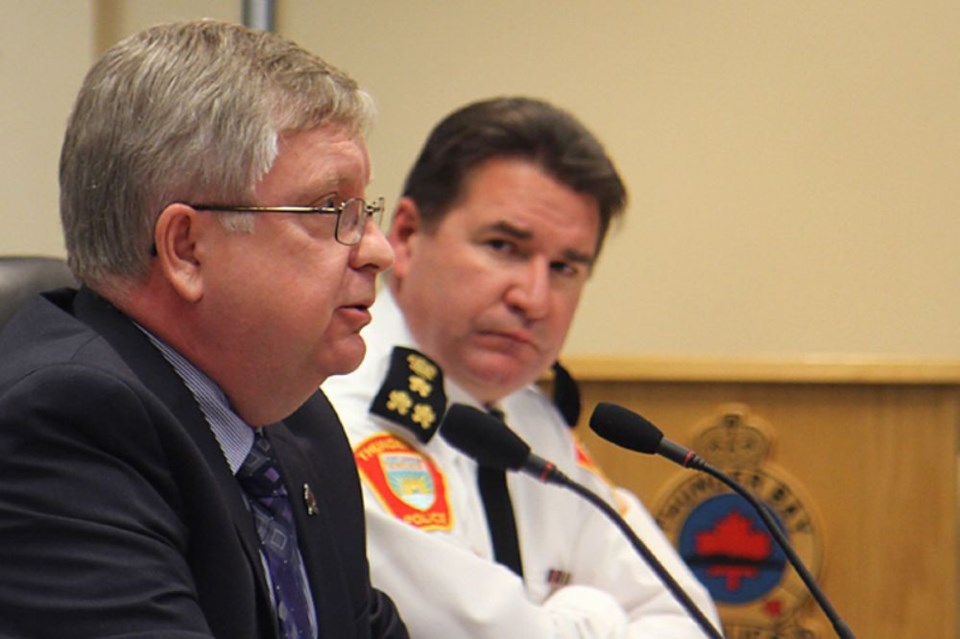THUNDER BAY – The city police force’s switch to a new patrol model hasn’t started off as smoothly as hoped.
Speaking after a police services board meeting on Tuesday morning, J.P. Levesque acknowledged the zone policing method hasn’t been implemented as successfully as intended
“I’ll be honest, we were maybe a little slow out of the gate,” the police chief said. “It’s a change in culture and a change in philosophy on how we do things. You throw in the fact we’re extremely busy, we didn’t anticipate being quite that busy, and it’s affecting it.”
Instead of officers rotating throughout the entire patrol area, the city has been divided up into six zones with each uniformed officer assigned to a specific zone. The belief was having the same officers continually in the same area would create familiarity and improve relations with the public.
Since zone policing was adopted on June 3 there have been eight homicide cases throughout the city, as well as a couple of other major investigations.
Those incidents require significant resources, resulting in officers being taken away from the specific zones to which they were assigned.
“When you have major crimes and incidents and you have to sit on a scene for a week securing the scene it takes away from the zone policing program,” Levesque said.
“We hope to get our legs under us and keep going in a positive direction with zone policing.”
One of the other appeals behind the zone policing model was that it would allow officers to have a stronger collaboration with a civilian program first launched a year earlier.
Executive officer Chris Adams said the two initiatives are starting to complement one another.
“When we began the program the excitement with a lot of the citizens was the ability to think they could connect directly with some of our officers,” Adams said. “It’s having that connection. Zone policing will help in that regard.”
Zone Watch, which began in April 2013, currently has 83 members with an additional 33 expected to join after the next training session.
The program allows members to highlight potential issues of public safety and crime prevention in their neighbourhoods.
“It could be as simple as identifying a walking path that has evidence of disorder issues, meaning people have been abusing substances or alcohol. That indicates we have two issues to deal with – the people dealing with addictions but we also have the neighbourhoods to keep safe.”
That kind of progress was highlighted earlier this year after Zone Watch members Brian and Kathy Forbes addressed issues on Syndicate Avenue by the McIntyre River, succeeding in having additional lighting installed as well as brush clearing.
Meanwhile the process to finalize a one-year extension for the 12-hour shift schedule for the next year is ongoing.
Levesque said the final document is still being completed, meaning the board can’t officially approve it until they can review the document. Board members voiced their tentative approval at the meeting.
The police association, which represents the officers, has already ratified the extension.
